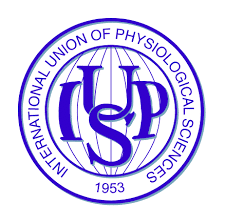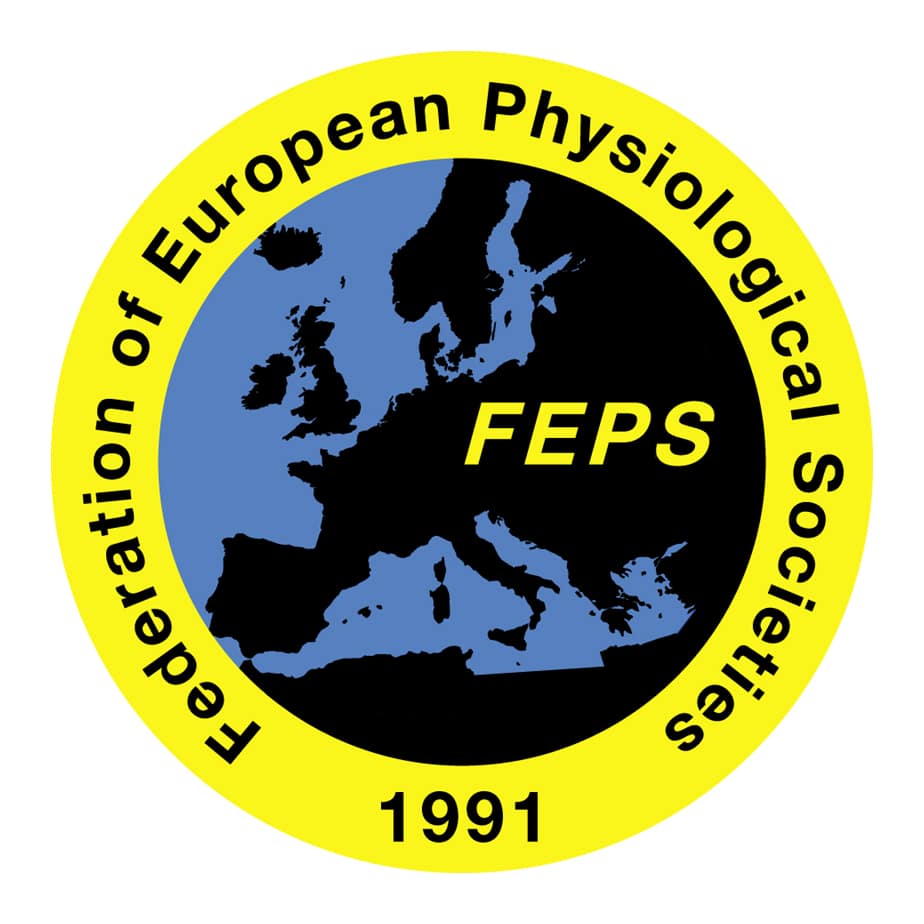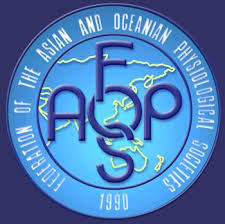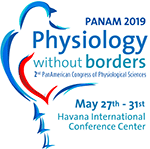
Physiology News Magazine
Physiology across borders
A roundtable with your regional societies
Features
Physiology across borders
A roundtable with your regional societies
Features
https://doi.org/10.36866/pn.112.39
Our national societies work to protect and promote physiology not only at home but also abroad, with many societies hosting or supporting travel to international conferences. However, none better personify the need to encourage increased collaboration than the international bodies that organize and coordinate activities between national societies. In recognition of the growing importance of these organisations, the Physiology News editorial board conducted an interview roundtable to capture their views on the current geopolitical landscape and the future of international collaboration.
|
|
|
|
|
|
|
Can you give us an update on the current state of physiology and its future as an academic discipline, in your region?
International Union of Physiological Sciences (IUPS): The current state of physiology is bright because it is returning to the limelight after falling off the centre stage of contemporary medicine over the last 30 years. As the academic discipline that studies the properties and functions of cells, tissues, organs and organ systems within all living organisms, IUPS (iups.org/) is optimistic on the future of physiology. In particular, this is an opportune time when physiology now embraces knowledge gained from genomics, molecular/cellular biology, and other disciplines to become an integrative discourse towards understanding the human life process under normal and disease conditions.
Federation of European Physiological Societies (FEPS): Physiology is alive and well in Europe! European physiologists continue to push scientific boundaries, while promoting scientific dissemination and education. Our physiologists remain highly respected both within the physiology field as a whole and within their sub-disciplines. Collaboration between European physiologists is more extensive than ever before, and made possible by several European platforms designed to foster this interchange of ideas and expertise. FEPS is one of these, which, through organisation of its annual meetings, allows scientific exchange in a broadly themed yet expert scientific environment. European agencies such as the European Research Council also continue to do a great service to European physiology by supporting large, collaborative projects spanning multiple nations, and allowing for exchange of students between groups. With the ongoing support of these agencies and European physiologists themselves, we look forward to continued excellence and relevance of European physiology in the coming years.
Federation of Asian and Oceanian Physiological Societies (FAOPS): Federation of Asian and Oceanian Physiological Societies (FAOPS) was officially formed in New Delhi in 1990 as a group representing physiological societies from 12 countries within the Asia and Oceania region. It included physiology societies from Australia, China, India, Iran, Israel, Japan, Korea, Malaysia, New Zealand, Taiwan and Thailand, representing about 5,000-6,000 physiologists in the region. The Federation was later joined by Pakistan Physiology Society and more recently by Physiology and Biochemistry Subsection of Myanmar Medical Association and the Physiological Society of Sri Lanka. The Physiology Society of Nepal and the Physiology Society of Uzbekistan and the Physiology Group, United Arab Emirates are associate members. The main purpose of the Federation is to encourage the development and advancement of physiological sciences in the Asia and Oceanian region.
In terms of teaching, physiology is still taught as a distinct basic science subject or course (programme) at both undergraduate and postgraduate level in some of the institutes in the region. Yet in other institutes in the region it is mainly taught as a preclinical subject in integrated problem-based or case-based medical curricula with little distinction between physiology, biochemistry or molecular biology. It is also taught as a subject in pharmacy and other health-related sciences. At some other institutes it has been integrated with biotechnology to boost research between physiologists and biotechnologists. In other institutes, attempts are being made to integrate physiology with mathematics, engineering, information, social science, computation, and artificial intelligence. In general, the demarcation that existed between physiology and other disciplines in the past is gradually fading in some of the member countries. The departments of physiology that stood by themselves in the past are now gradually giving way to the cluster-based organisation in some institutes, housing most of the basic science disciplines. This is blurring further the boundaries between physiologists and non-physiologists.
Research in physiology is increasing in the region, albeit somewhat uneven and limited by budgetary constraints. There is more research in physiology in the developed member countries but somewhat less in the developing countries. But as the lesser economies grow and develop, and with the rapidly expanding economic activity in the Asian region, it is hoped that research in physiology will also grow alongside the economic development. FAOPS Congresses that are held every four years provide a platform for participants from member countries to meet and share their expertise and increase collaboration. In addition, a number of member societies have their own journals that are widely indexed, publishing state-of-the-art research.
Pan-American Congress of Physiological Sciences (PANAM): Physiology is growing up in the region of the Western Hemisphere. There are several universities in the continent where Physiology is one of the specialities studied by physicians. Also, in non-medical universities and in different careers, physiology is one of the disciplines that enhances their profile.
African Association of Physiological Sciences (AAPS): Physiology as a discipline in the African Continent has literally been in a state of flux. The African Association of Physiological Sciences (AAPS), from humble beginnings in 1989 to the present, has literally been hobbling. At the moment there are really four active members of the AAPS, i.e. Egypt, Nigeria, South Africa and Sudan, with occasional appearances of Morocco, Kenya, Ethiopia, Uganda and Zimbabwe at our meetings. However this observation does not detract from the fact that the teaching of physiology is actively promoted in about 120 medical schools in over 30 African nations. Physiology has always been a very popular subject and continues to be a very attractive subject in Africa.
What is your organisation’s biggest accomplishment, and the greatest challenge it faces?
IUPS: Accomplishments – 1) IUPS releases the landmark Board of General Assembly (BGA) Report, in collaboration with The Physiological Society, on ‘Physiology: Current Trends and Future Challenges’ (iups.org/media/other_reports/Physiology–Current_Trends_and_Future_Challenges.pdf) at the 2017 Congress in Rio de Janeiro. This report assesses the global strength of physiology as a discipline, highlights the similarities and differences within the international community of physiologists, and points out the challenges the global physiological community faces. 2) The quadrennial IUPS Congresses and scientific meetings organised by IUPS and its member societies provide wonderful opportunities for global physiologists to share cutting-edge knowledge and for networking with their peers. 3) IUPS is currently pursuing the mission to ‘return physiology to centre stage’. Despite the mountains of genetic and molecular data, the ultimate existence of humankind roots in its functional expression that we call physiology.
Challenges – 1) IUPS must continue to spearhead recognition of physiology as a key academic discipline in medicine. 2) IUPS must also advocate the importance of physiology to the funding agencies by emphasising the importance of functional implications of genetic manipulations or biochemical processes. 3) IUPS must make a relentless effort to attract young investigators to take up research in physiological sciences. 4) Finally, IUPS must make physiology a ‘brand name’ in contemporary medicine.
FEPS: FEPS has succeeded in bringing the vast majority of European physiology societies (34 in total) together under a single umbrella. No small task! Through our annual meetings, we have promoted an opportunity for members of these distinct societies to come together both scientifically and socially. We are proud to have celebrated our silver anniversary at the FEPS Paris meeting in 2016! In the last two decades, physiology meetings have been challenged by evolving sub-disciplinary and thematic meetings. Every sub-discipline within physiology has of course witnessed impressive specialisation during this time. Indeed, the days are past when a trained physiologist could walk into a lecture in any field of physiology and understand the content. This makes the role of organisations like FEPS and physiology as a whole more important than ever! How else can we integrate findings from these disparate sub-studies? We must strive to keep scientists mindful of the benefits of a broad-minded and interdisciplinary scientific environment.
FAOPS: FAOPS holds its scientific congress every four years together with numerous pre- and post-congress workshops on laboratory techniques and in physiology education for participants from member countries. Workshops on research techniques have also been held in-between the Congresses. A small amount of financial subsidy is usually provided by FAOPS to the host Society organising the Congress, some of which is used to subsidise the travel and registration of young investigators from within the region and of members from the smaller physiology societies.
Since its inception it has held eight Congresses in the various member countries. Leaders in research in physiology from
all over the world are invited to speak at these Congresses. Over the years, FAOPS has provided a good avenue to increase communications between physiologists in the member countries.
The member societies, or local institutes, of course, continue to have their own national-level activities promoting physiology in one way or another. For example, the International Medical Schools Physiology Quiz, a FAOPS independent activity, that was initiated by the Department of Physiology, Universiti Malaya, Malaysia, more than two decades ago has helped significantly in promoting interest in physiology in the region, if not the world. Such quizzes are now being held in a number of FAOPS member countries, and it is hoped that this activity will expand to more countries in the world.
Funding remains the biggest challenge for FAOPS as its current source of funding is mainly the contributions from member societies, which is based on their individual society’s membership strength.
PANAM: The Second Pan-American Congress of Physiological Sciences is the greatest challenge. The II Panam is organised by several national societies from the continent. Our slogan is ‘Physiology without borders’ like in the first PANAM. You can find more information at panam2019.com.
AAPS: To our credit, we hold International congresses triennially with the last one in Lagos, Nigeria, in September 2016, following on the one in Cairo in 2013. African physiologists are recognised for their teaching quality but this has not been matched by our research output, which is meager and represents a big challenge. Recently, the International Union of Physiological Sciences (IUPS) during the presidency of Denis Noble, initiated the concept of ‘Trading Post’ that was designed for donation of or requisition for available but useful and needed equipment to laboratories, particularly in Africa. This is available on the IUPS website and should be actively patronised by our friendly donors.
At the last IUPS Congress in Rio de Janeiro, Brazil, in August 2017, there was a fairly large African contingent and there were discussions on the future direction of the African Physiology as well as the need to bridge the divide between the Anglophone and Francophone members. Thus it was decided to hold a meeting around Central Africa, in order to attract more countries, and based on this, AAPS decided to have its next Education Workshop in Kigali, Rwanda. This has been slated for 2–4 December 2018, and we are looking forward to this. However, the greatest challenge is funding especially to support the attendance of junior faculty.
Tell us about your most exciting upcoming project and the role your organisation plays in international collaboration
IUPS:
- Increase the visibility of IUPS in the global biomedical community: Nominate ‘physiology ambassadors’ as IUPS representatives to deliver lectures in major basic and clinical biomedical meetings.
- Outreach to fellow physiologists and young investigators: upgrade the IUPS website, establish social media, organise‘young physiologist forum’.
- Interactions with other biomedical unions: sponsor IUPS Named Lectures or symposia in major meetings organised by other biomedical unions, or invite them to organise symposia in conferences organised by IUPS and regional federations.
- Mentor-Mentee programme: this new initiative will bring together potential mentors and mentees at various career stages, and in both academic and clinical settings, to promote dialogues and aid career development. IUPS is in the best position to identify potential experts to serve as mentors in this program, particularly across national boundaries.
- Physiology Education Workshop: IUPS Initiative: two Workshops have been planned for 2018: one in India in November organised by three local institutes in collaboration with the IUPS Education Committee; and another one in Rwanda in December organised by the African Association of Physiological Sciences.
FEPS: FEPS has played a significant role in the organisation and promotion of the Europhysiology project that was agreed upon in September 2015. It is hoped that this exciting initiative will attract the participation of large numbers of physiologists from across Europe, and thus enable organisers to hold specific sessions and thematic symposia to represent all aspects of physiology. The first meeting of the Europhysiology series will be organised in London in mid-September 2018, the second in Berlin in 2020, and the third in Copenhagen in 2022.
FAOPS: The next upcoming event is the 9th FAOPS Congress that will be held from 28 to 31 March 2019 in Kobe, Japan. It is hosted by the Physiological Society of Japan. In addition to the Congress pre- and post-congress workshops and internships will be organised. Participants at the congress will include eminent speakers for plenary and special lectures from all over the world. Plans are also underway to celebrate the 30th anniversary of FAOPS in Kobe. The 10th FAOPS Congress will be hosted by the Iranian Physiological Society in 2023.
PANAM: The upcoming project is the II PANAM and all the Societies play a key role in the success of this meeting. The organisations that take part in the PANAM are involved in a strong international collaboration.
Has international scientific collaboration increased or diminished across your region? How has this changed in the last decade or so?
IUPS: International scientific collaboration in biomedicine, across different disciplines and between basic-clinical-industrial entities, has increased significantly during the past decade. We now witness more published research outcomes from collaborative work by multi-national research groups with complementary research expertise. With the realisation that the primary goal of biomedical research is to provide the best solutions
to unmet global human health issues, we anticipate that this trend of international collaboration will be sustained.
FEPS: FEPS has made a significant impact and contributed to international scientific collaboration in Europe. During the last decade, international scientific collaborations within Europe have become even more dynamic. Indeed, as the sub-fields of physiology have become ever more specialised, so too has the need to recruit collaborative assistance from other groups with distinct expertise. Very often such groups are not found locally or even nationally, making international collaboration essential. Young European scientists are particularly eager to travel and study in other countries, and this exchange makes for exciting, youthful, and international environments in the vast majority of successful European laboratories.
FAOPS: Formation of FAOPS has certainly increased the links between physiologists across the region. The Congresses have provided a good avenue for physiologists from within the Asia–Oceania region to meet. In addition, the involvement of speakers and senior invitees from Europe and America during these congresses provides for increased communications between physiologists in the Asia-Oceania region and those from Europe and America. Considerable collaboration exists between neuroscientists in the Asia–Oceania region and those in Europe and America, aided in part through FAONS and IBRO. Besides this, some of the FAOPS office bearers over the years have also held important positions in IUPS and other smaller regional organisations, like FAONS and South Asian Association of Physiologists.
PANAM: Because there isn’t a Pan-American organisation, all the societies from the continent have to work together to organise the PANAM in Havana.
AAPS: African physiologists because of their colonial past, especially from Britain and France, have had some collaboration over the years with universities in these countries. Many of the older and upper middle age colleagues did cut their research teeth in our ‘parent’ countries especially in the 1970s and 1980s. The majority retained their contacts and were able to send out graduate students abroad, for some bench work. The same phenomenon is also occurring with universities in the United States. The advantages are the exposure to good research but, unfortunately, with little equipment to follow up with on return home. Thus, there will be the need to enhance more of these collaborations as well as stimulate increase in patronage of the IUPS Trading Post.
Recently, we have had some interesting initiatives from the American Physiological Society (APS) and ADInstruments. APS is in discussion with AAPS on how to get more Africans to attend Experimental Biology (EB) meetings, and hopefully this initiative will come to fruition soon. ADInstruments has made some funding available for sponsoring graduate students to visit other labs in Africa for their bench work. This is reminiscent of The Physiological Society initiative in 1993–1994 that gave grants for consumables and support for a graduate student to visit a UK Lab. We hope that more such avenues for support will reemerge. However, The Physiological Society and APS (EB) still provide some support for Africans with accepted abstracts to attend their conferences and hopefully the upsurge in attendance at these conferences will continue.
The AAPS is quite optimistic that with increased collaboration as well as improvement in funding and facilities, physiology in Africa will move to greater heights. We also need support for our meetings as well as for attendance at the big meetings in Europe and America, and maybe in China in the nearest future.
How do you navigate the cultural, political and economic differences between countries in your region?
FAOPS: The Asia–Oceania region has a huge cultural diversity, but most in the region speak the English language. The medium
of communication at all FAOPS Congresses and workshops is in the English language. With the congresses moving from country to country within the region there exists a great opportunity to mix and learn about the cultural practices of the member countries. In addition, FAOPS congresses are open
to participants from all parts of the world without gender, political or religious bias or prejudice. Social events are often held at the Congress dinners show-casing the culture and practices of the host country.
FEPS: At the end of the day, scientists speak the same language no matter their background. In our experience, any such differences are easily overcome
and misunderstandings are rare. In fact, differences in background are celebrated! One needs only to watch the exchange of food between international students in the cafeteria to feel inspired. While there exist some economic differences between countries in Europe, organisations such as FEPS are designed to give special promotion to those whom may need extra assistance. We aim to include everyone.
PANAM: In spite of the political and economic differences among the participant countries, working together on PANAM will be no problem at all. The Latin American countries have many cultural identities among them but, on the other hand, a common language and history. All of them have close contact with the North countries as well.
AAPS: The African continent is a heterogeneous mix of languages, culture and political diversity, ranging from the Arab North to sub-Saharan Africa, with English, French, Portuguese and Belgian former colonial masters. This diversity has been a challenge in forging a close identity among the scientific community, including physiologists. As for the political landscape, Africa has been a disappointment in terms of democratic norms. Sadly, after over 50 years of independence, there have not been any encouraging signs with most countries labouring under a perpetual one-man rule. These political scenarios combined with economic malfeasance have impacted negatively on societal and intellectual development as well as contributing to underfunding of research, hence resulting in the loss of talent or Brain Drain from Africa. However, the Republic of South Africa still has some semblance of quality research as evidenced by the positions of some of their institutions in the World University Rankings.





